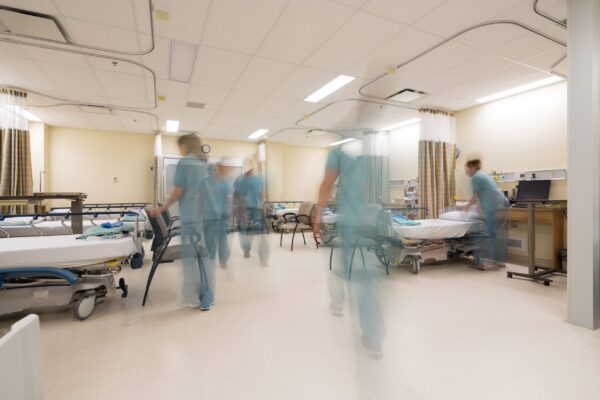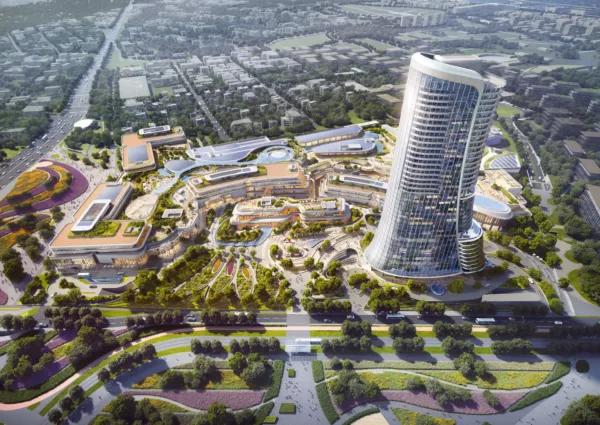

Dereck Baker, a Hill International site coordinator working on the Port Authority of New York & New Jersey’s World Trade Center Transportation Hub in Lower Manhattan, stops abruptly and turns, pointing to the plywood-covered temporary floor beneath his work boots. “Right here, just below us, is the Temporary PATH Hall. Thousands of commuters walk through there every day, just underneath us,” he explains. Huge, curving skeletal beams are visible just beyond a temporary wall. “All of this work has been going on right above the thousands of commuters who use the temporary station every day, and none of them have seen it. None of them know that this is right above them.”
Baker, who has worked for Hill International since 2007, is part of a team hired by the Port Authority to monitor progress of work on the Transportation Hub. Much of the work on the project, however, has taken place out of the public’s view– partitioned off by temporary walls, encased in thick slabs of concrete, enclosed within high-tech security gates, perched high above the ground, or concealed up to 120 feet beneath it.
A couple of stories below, work on the Transportation Hub’s expansive main transit hall is far enough along to get a sense of the mega-station’s potential grandeur. The bright and airy, 365-foot-long great hall—longer than an American football field—is supported by only four columns. Elegant grand staircases grace either end and will be finished so they gleam in the abundant natural light. Marble that lines the space is being painstakingly installed. Its design and sheer expanse are breathtaking.
The Port Authority began planning, designing and building the Transportation Hub in the wake of the 2001 terrorist attacks that felled the Twin Towers and the wrenching and painstaking forensic reclamation that followed. Located on the 16-acre World Trade Center site in Lower Manhattan–home to Wall Street and the world financial district—the Transportation Hub has been called one of the world’s most complex, ambitious and symbolic projects to-date.
The highly aesthetic glass and steel Transportation Hub was designed by renowned Spanish architect Santiago Calatrava to be a permanent and poignant replacement for a temporary rail station built to restore transit service to Lower Manhattan following 9/11. Calatrava has said he was inspired by the city’s commitment to rebuild, and designed the Hub in the image of a bird taking flight.
A striking and intricate web of vertical and diagonal steel girders form the “wings” high above the confines of city streets, while the main transit hall, or “oculus,” sits below and at the center, flanked by what will be high-end retail and restaurant space. There, commuters will be able to access 11 different subway lines, the Port Authority’s Trans-Hudson (PATH) rail line to nearby New Jersey, the adjacent MTA Fulton Center, the busy Battery Park City Ferry terminal, the picturesque riverfront Winter Garden business and entertainment complex, the National September 11 Memorial & Museum, and One World Trade Center and Four World Trade Center (as well as Two World Trade Center, Three World Trade Center, and Five World Trade Center, when they’re completed).
The project also includes several ancillary walkways, concourses and street and site improvements, as well as the construction of a state-of-the-art Vehicle Security Center that spans several underground levels. Every tour bus, construction vehicle, delivery truck, cab and carload of visitors will be required to pass through and be screened by the security center before entering the site. (To maintain site safety and help ensure that the facility meets the anticipated demand, all construction-related deliveries to the site now are screened there.)
“The World Trade Center Transportation Hub is the most integrated underground transit center in New York City, and will serve as a world-class transit gateway when it opens later this year,” said Steve Plate, WTC Director of Construction.
A massive team of Port Authority professionals and outside consultants have spent the past several years shepherding the project’s transformation from a muddy, unrecognizable construction site to an international monument and tangible marker of the city’s resilience. They’ve been in near-darkness more than 100 feet underground, where prehistoric bedrock was chiseled away to make room for new, deeper foundations, where thick slurry walls were poured to hold back the adjacent Hudson River, and there again when millions of gallons of rain- and river-water flooded and were pumped (in a matter of days) from the site’s recesses after Hurricane Sandy in 2012. They’ve worked around, under and above an existing—and continually operating—subway line. They’ve seen plans and designs change to meet evolving logistics, security needs and incredibly challenging and unexpected site conditions (including the discovery of the near-fossilized remains of an 18-century wooden ship buried deep underground). They’ve accommodated myriad schedule changes, as shifting priorities and politics changed everything from major milestones and project delivery dates to how, exactly, materials ordered from around the world got into the hands of workers hunkered four stories below ground. They’ve watched with pride as the stark and stirring National September 11 Memorial & Museum opened to visitors from throughout the world a decade after the attacks, and then again when the 104-story One World Trade Center—the U.S.’s tallest building and the world’s fourth—was completed and opened last November. That same month, the final steel rafter was raised and set on the Transportation Hub, a major milestone, and the Port Authority is eager to show the world the finished product in late 2015.
The Transportation Hub is a one-of-a-kind project, in terms of both scope and scale, and has global significance as well. There really isn’t any applicable comparison, Port Authority officials said. While the $3.7 billion project has been criticized for exceeding both budget and schedule, its complexity and seemingly endless array of challenges often are overlooked.
“The Port Authority recognizes the Hub as the most complex project in the world, due to the complexities of the World Trade Center site, such as maintaining service on the No. 1 Subway Line while work on the Hub continued below it, extensive recovery and repairs following the devastation of Hurricane Sandy, repairs to the Slurry Wall after Hurricane Sandy, and the construction of the 9/11 Memorial and Museum and the World Trade Center towers,” Plate said.
The Hub also will not only provide vital transportation access, but be integral to Lower Manhattan’s ascension as a premiere destination. Even before 9/11, this historic section of the city had played sleepy second-fiddle to flashier, busier Midtown, with little to do there after-hours. Today, that’s quickly changing. Renewed interest in the area, largely the result of all of the construction there, has fueled a welcome spate of new business. Chic restaurants and luxury shops are opening, and high-rise, high-end real estate is going up. And, fashion is following on the heels of finance, as Conde Nast and other industry notables move in. World-class designers as well as celebrated chef Mario Batali already have signed leases for space at the Hub, and are expected to attract more like them.
“The completed Hub will continue to help transform Lower Manhattan into a thriving 24/7 neighborhood and will serve over 250,000 passengers a day,” Plate said. He added that the Hub’s construction “has generated billions–approximately $5.4 billion in economic growth for the region–and tens of thousands of jobs.”
The Transportation Hub will be the city’s third-largest transportation terminal, behind Grand Central Terminal and Pennsylvania Station, both in Midtown. According to Port Authority spokesperson Erica Dumas, the main hall of the Transportation Hub will be 90 feet longer than the iconic main concourse at Grand Central, completed in 1913.
“Its incredible architecture will rival Grand Central,” Dumas said. “The Hub’s new retail space will bring an entirely new dynamic to Lower Manhattan.”
From a more practical perspective, the Transportation Hub will fill a long-standing need for easier access to various modes of transportation to and from Lower Manhattan.
“Commuters will have access to a level of inter-connectivity that has never existed before. They’ll enjoy improved travel to Lower Manhattan and the Financial District,” Dumas said. “For the Port Authority, this project will serve as an economic engine for the entire Northeast region.”
Port Authority officials are confident that the Hub’s completion and opening will quell its naysayers, who’ve grown increasingly impatient as other parts of the site, including One World Trade Center and the National September 11 Memorial & Museum, were finished and opened. Baker said he considers himself incredibly lucky to have been able to watch the World Trade Center site’s transformation. It’s an almost indescribably impressive sight, from the spire of One World Trade Center, to the tip of the steel girders that rim the Hub’s “oculus,” to the outdoor plaza and grade-level reflecting pools that sit in the Twin Towers’ footprints, to the labyrinth of tunnels, passageways, pipes and power lines a hundred feet underneath all of it.
“It’s like describing a pink elephant,” he added. “You’ve really got to see it–to experience it– to understand just how massive and how complex this project really is.”
Complex Logistics
Baker stops again to point out a long, narrow, barely perceptible divide between two huge swaths of concrete flooring in one of the basement levels beneath the site. “See this?” he asks. “This is a perfect example of just how close these individual projects actually were. This,” he says, pointing to the slab on the left, is part of the Greenwich Street Corridor and the 1-Line Subway above, and this” he continues, gesturing to the slab next to it, “is part of Three World Trade Center. “It’s a perfect example of the entire redevelopment program: all of these incredible capital projects, huge projects, going up simultaneously, right next to each other.”
In all, the site includes five new office towers that will provide a total of more than 10 million square feet of new commercial space, the National September 11 Memorial and Museum, which incorporates two, 30-foot-deep cascading pools created in the footprint of the Twin Towers, the new underground Vehicle Security Center, parking areas underneath Towers Two, Three and Four and the Transportation Hub, the Transportation Hub itself; concourses, tunnels, pedestrian bridges and other access-ways to multiple city transit lines, including the new Fulton Transit Center, as well as a new central chiller plant and central fan plants to accommodate the heating, cooling and ventilation needed throughout the site.
“The highly complex infrastructure—including the Memorial pools, repair of the Slurry Wall, the Museum and One World Trade Center, Towers Two, Three and Four—were under construction simultaneously, and the 1 train ran throughout construction,” Dumas said. “The 16-acre site sits adjacent the Hudson River in a busy urban neighborhood, a site with many large-scale construction projects. To say this project is complex is an understatement.”
Managing such incredible logistics requires Port Authority professionals to use every skill and bit of knowledge in their arsenals. It also requires a rare mix organizational, time management and people skills, and a healthy dose of tenacity.
Myriad Stakeholders
Adding to the project’s complexity are its many stakeholders, including the Port Authority, the New York City Mayor’s office and various city agencies, the states of New York and New Jersey and their involved agencies, the Federal Transit Administration, developers, adjacent property owners, project architects, contractors, subcontractors, tenants, 9/11 victims’ families and even the public. Despite the number of stakeholders, they’ve worked well together, and have been working well together for more than a decade, Dumas said.
Good Neighbors
Rumbling through the Transportation Hub project was the need to keep the popular No. 1 subway line, owned and operated by the New York State Metropolitan Transportation Authority (MTA), fully operational during all excavation and construction. The portion of the line that runs through the Hub had to be supported both during construction and into perpetuity.
The Port Authority also has worked with adjoining property owners and residents of the bustling neighborhood, as well as the families of 9/11’s estimated 2,983 victims, Dumas said. “This site is being developed while trying to respect the families of the victims, the needs of our neighbors and the needs of the public. There is an incredible amount of accountability felt by those involved in the rebuilding of the World Trade Center site.”
Port Authority officials are optimistic that those most closely watching the Transportation Hub project will be pleased with its ‘reveal’ later this year. Completing and opening the National September 11 Memorial & Museum, helped sate years of curiosity, and such milestones also were important to the Port Authority and the thousands of workers there. Last fall, executives and electricians, CEOs and steelworkers, bosses and bricklayers alike were inspired and spurred on when One World Trade Center was topped off and the Transportation Hub began taking discernable shape nearby.
Baker stops again, only momentarily, to shake the hand of an electrician hard at work in a tiny utility room, and asks about his family. He seems to know almost everyone. Such relationships are easy, Baker says, and are the greatest rewards of this sometimes-controversial and always challenging project.
“The Port Authority has put together a tremendous team. The people working on this project are one-of-a-kind; the best of the best,” he says proudly. Baker steps through a heavy steel door and into the bracing chill and bright, clear light of a mid-winter Manhattan afternoon. “You’re not going to find this kind of talent, this kind of dedication, in one place at one time—and for such a duration, for such a number of years—ever again.”
by Tricia M. McCunney, Hill International
Share
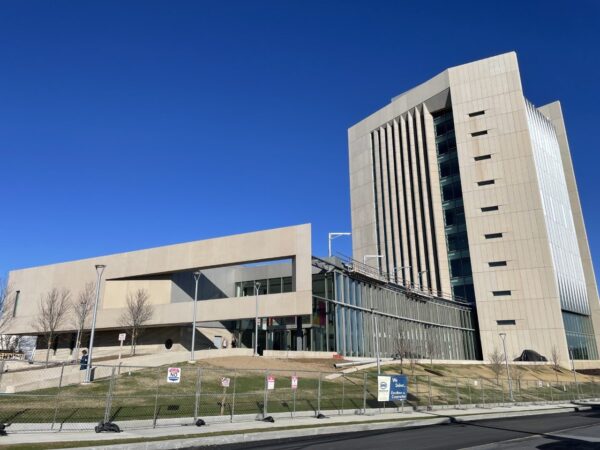
April 11, 2024 | Articles
A Model Move: Managing Move-In at the Sylvia H. Rambo U.S. Courthouse
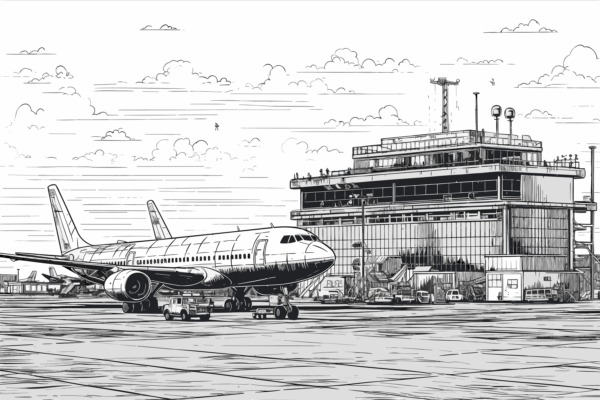
April 8, 2024 | Articles

April 4, 2024 | Articles
Driving Growth and Seizing Opportunity: Lukasz Marcinkiewicz Joins Hill as Country Manager, Poland

April 1, 2024 | Articles

March 27, 2024 | Articles
Building the Future: Women’s Leadership and Community Engagement in the Construction Industry

March 25, 2024 | Articles
Leveraging Data Analytics and Dashboards for Enhanced Project Performance
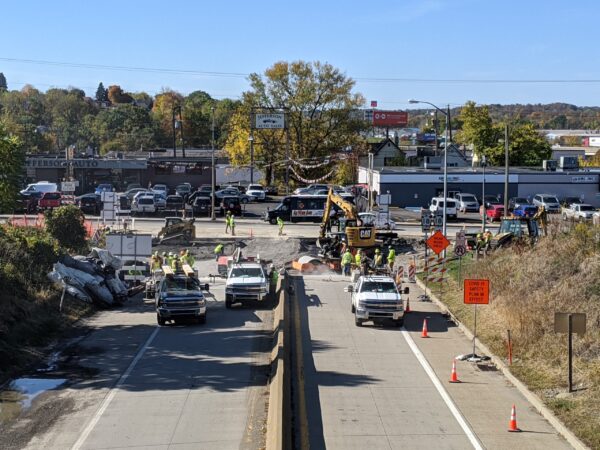
February 26, 2024 | Articles
Continuity, Creativity, and Collaboration: Delivering PennDOT’s Route 18 Signal Upgrade
We and use cookies and other tracking technologies to improve your experience on our website. We may store and/or access information on a device and process personal data, such as your IP address and browsing data, for personalised advertising and content, advertising and content measurement, audience research and services development. Additionally, we may utilize precise geolocation data and identification through device scanning.
Please note that your consent will be valid across all our subdomains. You can change or withdraw your consent at any time by clicking the “Consent Preferences” button at the bottom of your screen. We respect your choices and are committed to providing you with a transparent and secure browsing experience.
| Cookie | Duration | Description |
|---|---|---|
| cookielawinfo-checbox-analytics | 11 months | This cookie is set by GDPR Cookie Consent plugin. The cookie is used to store the user consent for the cookies in the category "Analytics". |
| cookielawinfo-checbox-functional | 11 months | The cookie is set by GDPR cookie consent to record the user consent for the cookies in the category "Functional". |
| cookielawinfo-checbox-others | 11 months | This cookie is set by GDPR Cookie Consent plugin. The cookie is used to store the user consent for the cookies in the category "Other. |
| cookielawinfo-checkbox-necessary | 11 months | This cookie is set by GDPR Cookie Consent plugin. The cookies is used to store the user consent for the cookies in the category "Necessary". |
| cookielawinfo-checkbox-performance | 11 months | This cookie is set by GDPR Cookie Consent plugin. The cookie is used to store the user consent for the cookies in the category "Performance". |
| viewed_cookie_policy | 11 months | The cookie is set by the GDPR Cookie Consent plugin and is used to store whether or not user has consented to the use of cookies. It does not store any personal data. |

